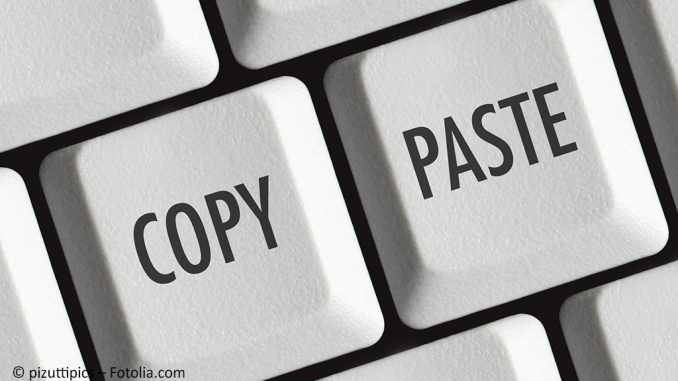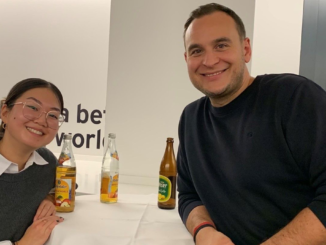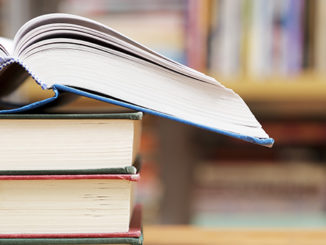
In the fourth part of our blog series on academic writing, we provide information on plagiarism – what it is, what types of plagiarism exist, the consequences of plagiarism, and how to avoid it.
The work of a “plagiarius” (Latin for “seller of souls”) – a plagiarism – inevitably results in a grade of 5.0, and de-registration in case of recurrence! This threat, which is also uttered at Munich Business School (MBS), confuses many students. They are worried that they might be punished for accidental plagiarism. This, in turn, confuses the lecturers: How can one accidentally produce a plagiarism? It’s quite simple to avoid: List the sources and you’re done. We want to shed light on this discrepancy.
What Is Plagiarism?
A plagiarism is fraud, i. e. an assertion of false facts, a presumption of authorship. The author of a plagiarism passes ideas, results, formulations, images, structures etc. off as his own creation. It is completely irrelevant whether the plagiarist hopes to gain an advantage, e.g. an academic degree or a good grade for a term paper, or whether they simply balk at the effort of dealing with the rules of correct citation. This “intellectual theft” is a serious violation of the rules of good scientific practice and sometimes even copyright law, and is punished. In addition, plagiarizing MBS students violate their statement in lieu of an oath, which could lead to a fine or even imprisonment (§456 StGB) following the criminal charge by the university.
Types of plagiarism
There is plagiarism, and then there is plagiarism. There are various types and smooth transitions in between. The most common types of plagiarism that we are talking about here can help students to support their pursuit of scientific integrity[1]:
- Verbatim plagiarism: word-for-word copying of either a sentence, paragraph, chapter or a complete paper
- Word-switching: adopting foreign statements with slight changes, paraphrases (= corresponding adoption of foreign texts) without quotation
- Pawn sacrifice: verbatim copying, but marked only as an indirect quotation
- Concealing sources: using ideas or insights without indicating the source
- Structure plagiarism: adopting the structure/outline of a text
- Translation plagiarism: passing the translation of a text off as own text hoping that e. g. plagiarism detection software does not uncover the theft
- Citation plagiarism: adopting sources including bibliographical information from an external source, without own research and without indication of this source
- Self plagiarism: using an own paper that was submitted elsewhere as source without indicating it
- Image plagiarism: adopting graphics, pictures, tables, diagrams – in whole or in part – without indication of the source
A special type of plagiarism is the submission of a paper authored by third parties (“ghostwriting”) on behalf of the plagiarist.
Of course, the above examples are easily recognizable as violations of scientific honesty, contradicting the search for “truth”. Nevertheless, we want to provide students and lecturers at MBS with a higher level of security in dealing with central ethical codes of academic writing. Therefore, a guideline for the detection, prevention and punishment of plagiarism at MBS is already in progress.
What is the opposite of plagiarism?
“Good scientific practice” could be the answer.[2] Good scientific practice consists, among other things, of the fact that in order to prepare a scientific paper (a term paper or a thesis), first of all, the current state of research must be presented, which is only possible by indicating sources. As part of their personal contribution to answering the research question, the author must explicitly indicate all sources that they used; sources which served as a source of ideas, sources from which something was adopted – whether verbatim or just concerning the idea or the structure. These references must enable readers to locate the sources according to the respective formal requirements.
That’s easy, isn’t it?
Intention – yes or no?
To produce a deliberate plagiarism seems to be easy at first: copy & paste and you’re done. However, since deliberate plagiarism always has the purpose of not being recognized as such, extensive knowledge and precautions are necessary in order not to be exposed. The humorous guide to plagiarism by Roland Schimmel (German text) shows what you need to pay attention to if you want to produce a successful plagiarism. The conclusion: Plagiarizing is far too complicated. It takes less effort to write a correct paper with correct citation than to successfully hide stolen ideas. Especially beginners or non-specialist authors cannot measure how extensive the knowledge and experience of the supervising lecturers and professors are, how easily they either recognize – or at least suspect – a plagiarism – and eventually start searching for evidence. In addition, examiners can also make use of plagiarism detection software, which provides extremely useful information.
Accidental plagiarism is a difficult construct: How can a student prove that it was not intentional? Especially in the first semesters, the students’ comments in the lectures on the introduction to academic writing suggest that they are puzzled by the fact that they really have to indicate everything they have read and used in their paper somewhere. Doesn’t it look weird when there’s footnotes all over it? Half a page full of footnotes seems to them to be a mere monstrosity – who wants to and who can still read it? The alternative way of using the American citation format is not a solution for them either: Who reads a text full of parentheses? They would probably prefer to ask: Are you serious?
How to avoid plagiarism
We believe that the answers oh how to avoid accidental plagiarism are already implied by the questions above:
- Exercise yourself in scientific practice: Students must read scientific texts (if necessary, be forced to do so) in order to familiarize themselves not only with the contents, but with the methods of science as well. How do you quote? How do you bring forward arguments? What role do references to other authors play? And yes, you do read such texts in science. For if we recall the objectives of science, this method of referencing sources is one of the means of seeking impartial truth.
- No infotainment: Comparing scientific texts with journalistic and feuilletonistic texts – which the students seem to be more familiar with – is illuminating as well. In particular, if the different purposes and target groups of these texts are clearly highlighted.
- The ego trap: Often times, the students show disappointment: What? My personal opinion doesn’t matter at all? So the paper consists merely of reproducing what others have written/said? Yes, this is the case for the first academic papers and also for final theses. The current state of research has to be documented, i. e. it has to be shown “what others have said”. But that is precisely what constitutes proof of professional expertise: Anyone who knows the relevant specialized literature, has read and weighed up the respective authors and their works, can have a say in the scientific discourse. The citation of specialized texts is therefore a quality criterion which is to the author’s credit. In the end, our ego also benefits from the fact that we can present technically sound information in any context. If this is missing, the work is simply not scientifically based.
The first own research contribution of academics, e. g. the discovery of new findings, the confirmation or falsification of an existing theory, will not take place until doing a doctoral thesis, which is therefore to be made accessible to the scientific community through publication. - Mentoring: Students must be instructed in academic writing. Especially their first steps require intensive support by the lecturers. This is also the best method of avoiding or immediately recognizing plagiarism, including plagiarisms in the grey area mentioned above. If we as lecturers accompany the work and follow its progress, we know what the students’ achievements have been. And it will ensure greater satisfaction on both sides if the students not only master the topic of academic writing, but also find pleasure in it.
Do you enjoy academic writing?
The avoidance of plagiarism and accordingly the evaluation of sources and their indication is actually good for a lot of things! A major difference to conventional and everyday expressions of opinion lies in the foundation of apparently generally known and consensus-based statements: “The German economy has been on the upswing for several years now” could be denied by conspiracy theorists, social associations, unemployed academics, opposition politicians or meticulous fellow academics, unless the data from a European statistics authority or an international organization (OECD, IWF) proves what exactly the meaning of upswing is in the present context (= GDP growth).
Establishing this basis, i.e. working with reliable sources, creates security in one’s own argumentation, also in discussions outside the field of science. Continuing the work with documentary material by familiarizing oneself with the state of the art in a subject-specific area, a broad and at the same time in-depth expertise is created, depending on the intensity of the work, which, in addition to methodological and basic knowledge, should be achieved at the end of studies in at least two subject areas (seminar paper, final thesis).
This expertise also includes the fact that students, through extensive research, train the ability to distinguish reliable sources from others and to consider sufficiently differentiated sources. This ability should be useful to them throughout their entire lives, e.g. in researching the best ways to invest their financial resources or to avoid having a bad reputation for being a fake news spreader.
Plagiarism allegation: so who’s to blame?
If there is an allegation of plagiarism, the question of responsibility of supervisors and accordingly the respective university or research institution ever arises. There are some prominent plagiarists such as Karl Theodor zu Guttenberg, the former German Federal Minister of Defense, or Anette Schavan, the former German Federal Minister of Education, whose cases are well-documented in the media. In 2011, the Hungarian magazine HVG[3] published findings according to which the then Hungarian President Pál Schmitt used as many as 180 pages (of a total of 215 pages) of his doctoral thesis from a study by a Bulgarian sports scientist published in French. In addition, he used some more pages from a paper of a German sociologist, both in Hungarian translation. In 2012, he was finally deprived of his doctorate and resigned. However, the investigative commission attributed the university to a considerable contributory negligence, saying that it should not have accepted the thesis in the first place.[4] The universities and supervisors of such papers bear a considerable responsibility for plagiarism if these are undetected because of lack of control, eventually resulting in degrees and credit points.
Responsibility for scientific integrity lies with both sides: Authors (students and researchers) and the institutions (supervisors, universities, publishers etc.) who accept and evaluate these papers. They both have a real interest in defending the methods and ethics of science – it’s easy, isn’t it?
You want to learn more about academic writing? Then take a look at the first three parts of our series: Part 1: What is the truth? Part 2: Research Part 3: Scientific language
Sources:
[1] as cited in: Schwarzenegger, Christian (2006). Plagiatsformen und disziplinarrechtliche Konsequenzen. In: unijournal. Die Zeitung der Universität Zürich, 4/2006, p. 3.
[2] cf. Deutsche Forschungsgemeinschaft (2013). Sicherung guter wissenschaftlicher Praxis. Denkschrift. Weinheim: Wiley-VCH.
[3] György Miklós (2012): Súlyos plágiumgyanú Schmitt Pál doktori értekezése körül. (Heavy accusation of plagiarism in connection with Pál Schmitt’s doctoral thesis). In: HVG, January 11, 2012; ORF Mittagsjournal (2012): Ungarns Staatspräsident unter Plagiatsverdacht. In: ORF, January 12, 2012.
[4] The thesis also seems to have contained numerous spelling mistakes, which to the Hungarian university could have been indifferent only because Pál Schmitt was a fencing Olympic champion twice, and world champion once.
The authors are responsible for the content and form of the article.

You are interested in economics and want to acquire in-depth business know-how?
Then the international business degrees at Munich Business School (MBS) are just right for you! At MBS you won’t cram dry theory from old textbooks, but learn in a outcome-oriented way and gain valuable practical experience. Convince yourself:
Bachelor’s in International Business
Master’s in International Business
Master’s in International Business I Finance
Master’s in Innovation and Entrepreneurship
Master’s in International Marketing and Brand Management
Master’s in Sports Business and Communication
MBA General Management
Doctor of Business Administration





